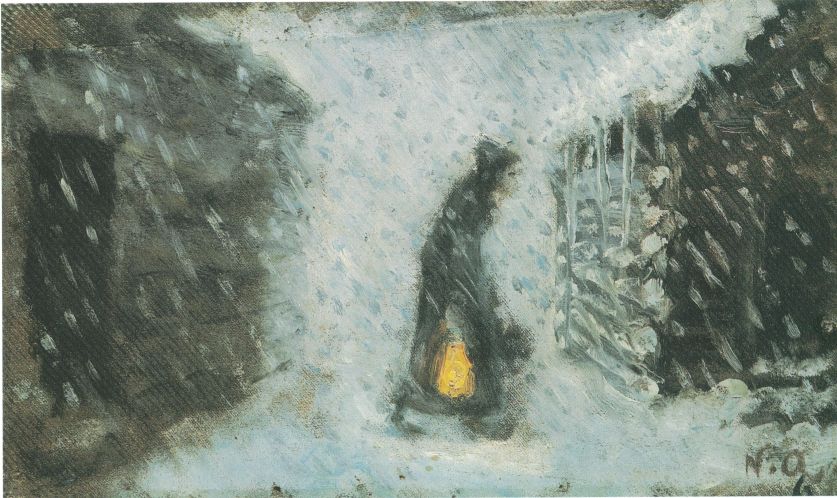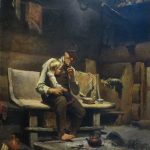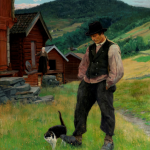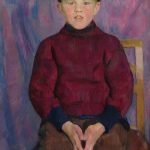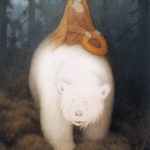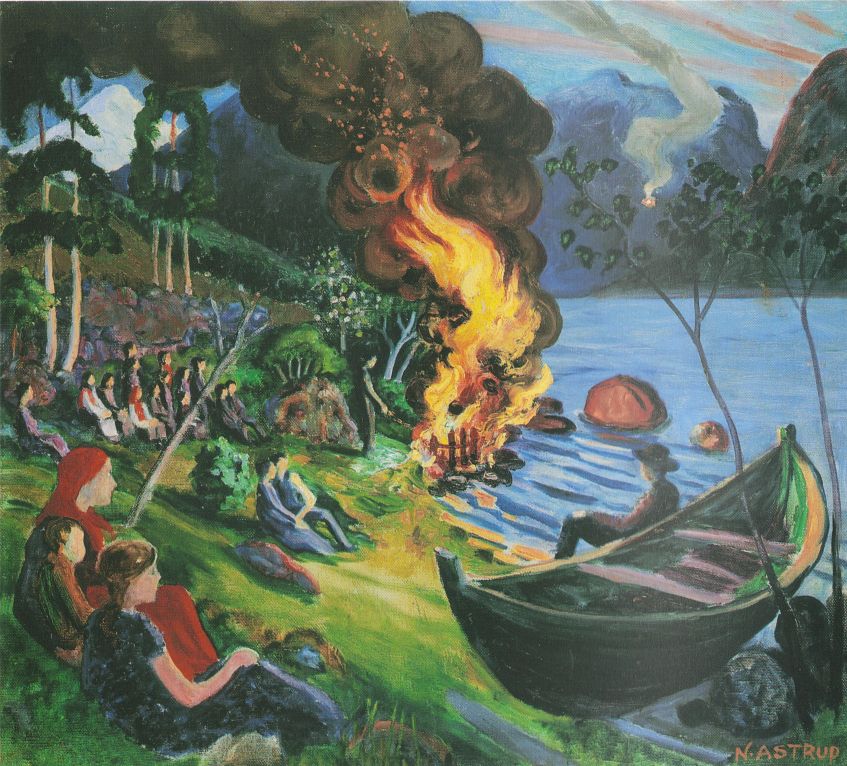
Nikolai Astrup (30 August 1880 – 21 January 1928) was a Norwegian painter and printmaker known for his vivid and enchanting depictions of rural life in Norway, particularly in the region of Jølster, where he lived most of his life. Astrup’s work is often associated with the Symbolist and Neo-Romantic movements, and he is celebrated for his ability to capture the magic and mysticism of the Norwegian landscape.
Early Life and Education: Nikolai Astrup was born in Bremanger, Norway. He displayed artistic talent from a young age and, in 1902, he began his formal art education at the Royal School of Art and Design in Oslo (then called Christiania). During his time in Oslo, he was exposed to a range of artistic influences, including Symbolism and the works of other Norwegian artists like Edvard Munch.
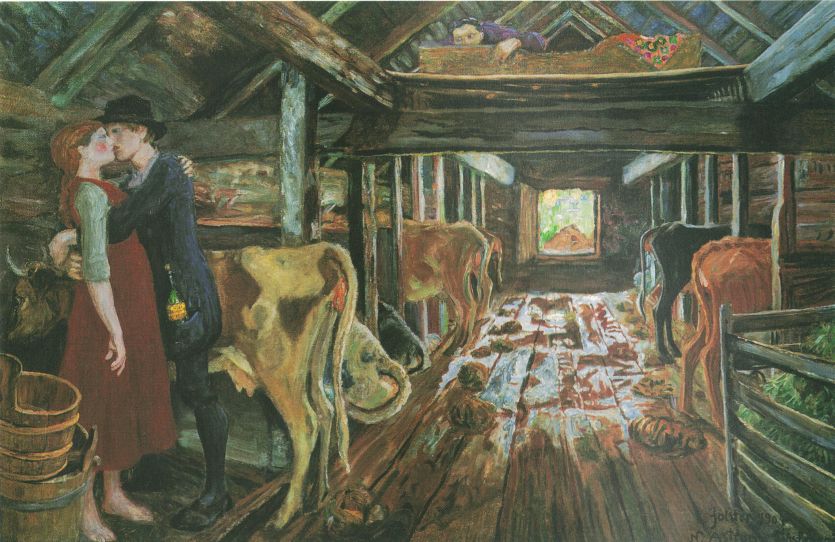
Return to Jølster: In 1912, Astrup returned to his family home in Jølster, a rural and picturesque region in western Norway. It was in this idyllic setting that he found his artistic inspiration. The landscapes, farms, and folk traditions of Jølster became the primary subjects of his art. His works often featured the natural beauty of the region, including its lush greenery, waterfalls, and serene lakes.
Artistic Style and Subject Matter: Astrup’s artistic style was characterized by a rich use of color and a dreamlike quality that made his works feel almost magical. He often incorporated elements of folklore and mythology into his paintings, creating a sense of mystery and wonder. His subjects ranged from landscapes to portraits, but it was his scenes of rural life in Jølster, often depicting farmhouses and the lives of the local people, that garnered him the most acclaim.
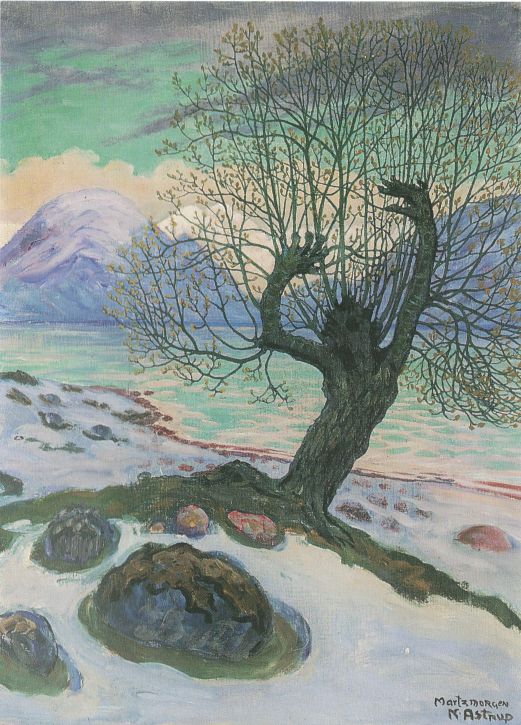
Printmaking and Woodcuts: In addition to painting, Astrup was also a skilled printmaker and is known for his woodcuts. He created a series of woodcuts known as “jølsterbilder” (Jølster pictures) that further contributed to his reputation as a master of capturing the spirit of the region.
Recognition and Later Life: Astrup’s work gained recognition in Norway during his lifetime, and he exhibited at various national and international exhibitions. However, his career was somewhat overshadowed by contemporaries like Edvard Munch. He faced financial difficulties, but his dedication to his art remained unwavering.
Legacy: Nikolai Astrup’s contribution to Norwegian art is now widely celebrated, and he is regarded as one of the country’s most important painters of the early 20th century. His work, with its focus on the natural beauty and folk traditions of Jølster, continues to captivate audiences with its sense of enchantment and nostalgia for a disappearing way of life.
Today, his paintings and woodcuts can be found in major museums and collections in Norway, preserving his legacy as a masterful artist who captured the soul of rural Norway with a unique blend of symbolism and vivid color.
